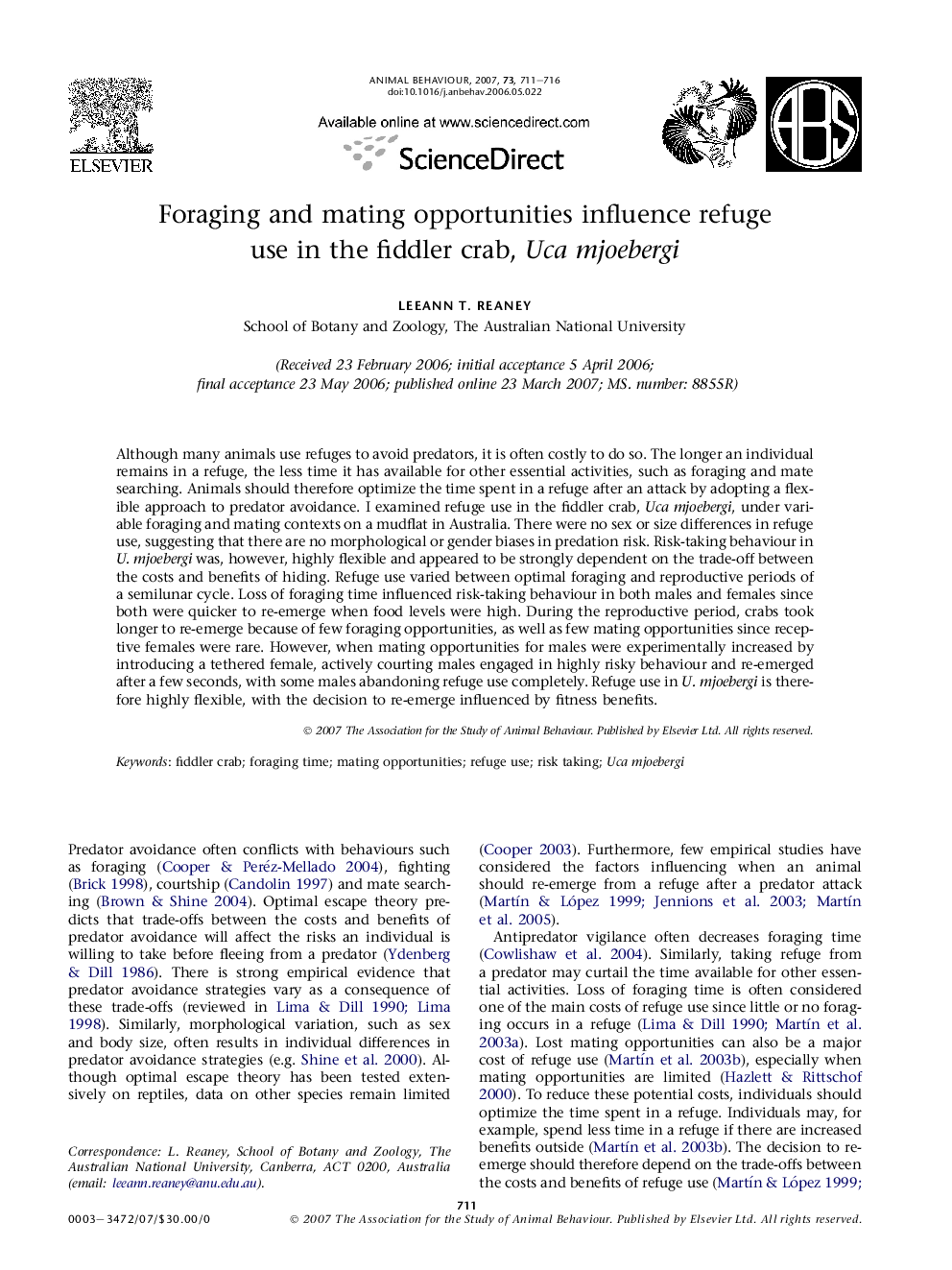| کد مقاله | کد نشریه | سال انتشار | مقاله انگلیسی | نسخه تمام متن |
|---|---|---|---|---|
| 2419025 | 1104363 | 2007 | 6 صفحه PDF | دانلود رایگان |

Although many animals use refuges to avoid predators, it is often costly to do so. The longer an individual remains in a refuge, the less time it has available for other essential activities, such as foraging and mate searching. Animals should therefore optimize the time spent in a refuge after an attack by adopting a flexible approach to predator avoidance. I examined refuge use in the fiddler crab, Uca mjoebergi, under variable foraging and mating contexts on a mudflat in Australia. There were no sex or size differences in refuge use, suggesting that there are no morphological or gender biases in predation risk. Risk-taking behaviour in U. mjoebergi was, however, highly flexible and appeared to be strongly dependent on the trade-off between the costs and benefits of hiding. Refuge use varied between optimal foraging and reproductive periods of a semilunar cycle. Loss of foraging time influenced risk-taking behaviour in both males and females since both were quicker to re-emerge when food levels were high. During the reproductive period, crabs took longer to re-emerge because of few foraging opportunities, as well as few mating opportunities since receptive females were rare. However, when mating opportunities for males were experimentally increased by introducing a tethered female, actively courting males engaged in highly risky behaviour and re-emerged after a few seconds, with some males abandoning refuge use completely. Refuge use in U. mjoebergi is therefore highly flexible, with the decision to re-emerge influenced by fitness benefits.
Journal: Animal Behaviour - Volume 73, Issue 4, April 2007, Pages 711–716